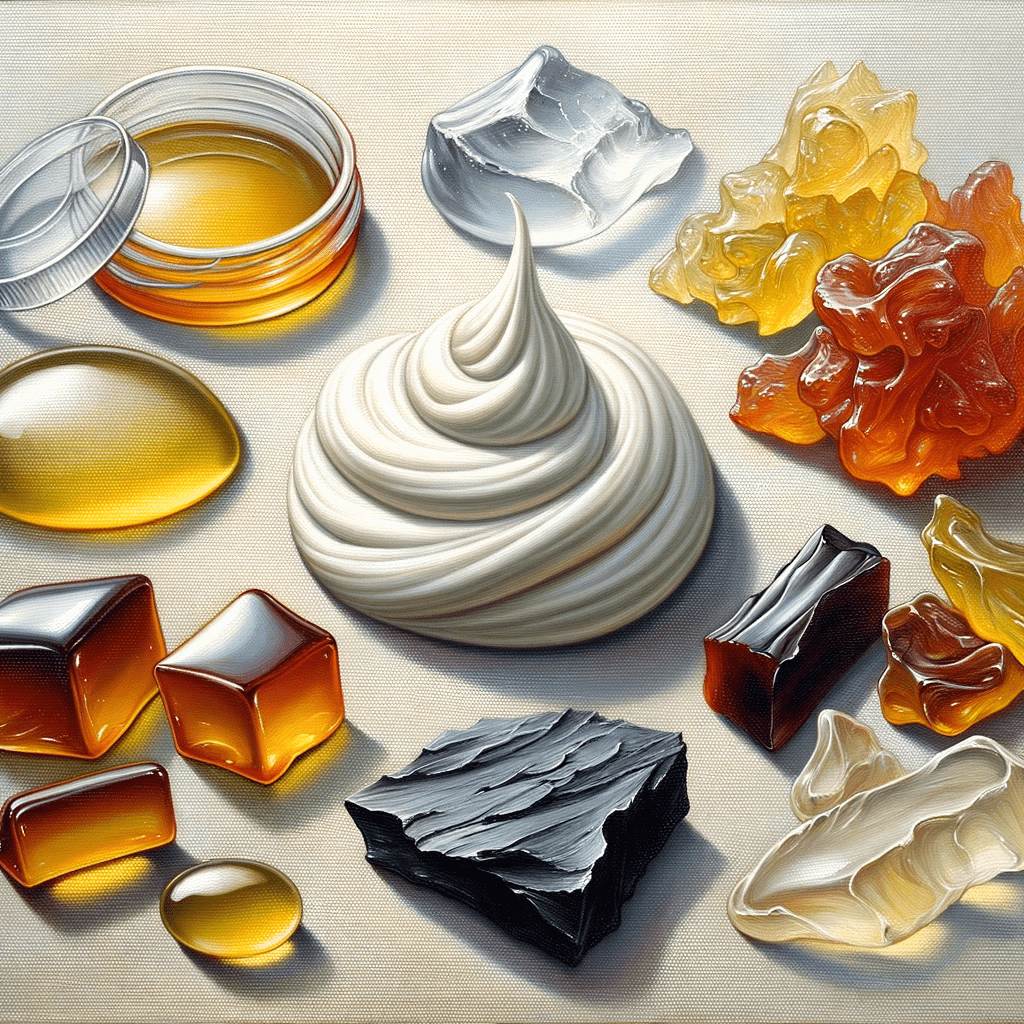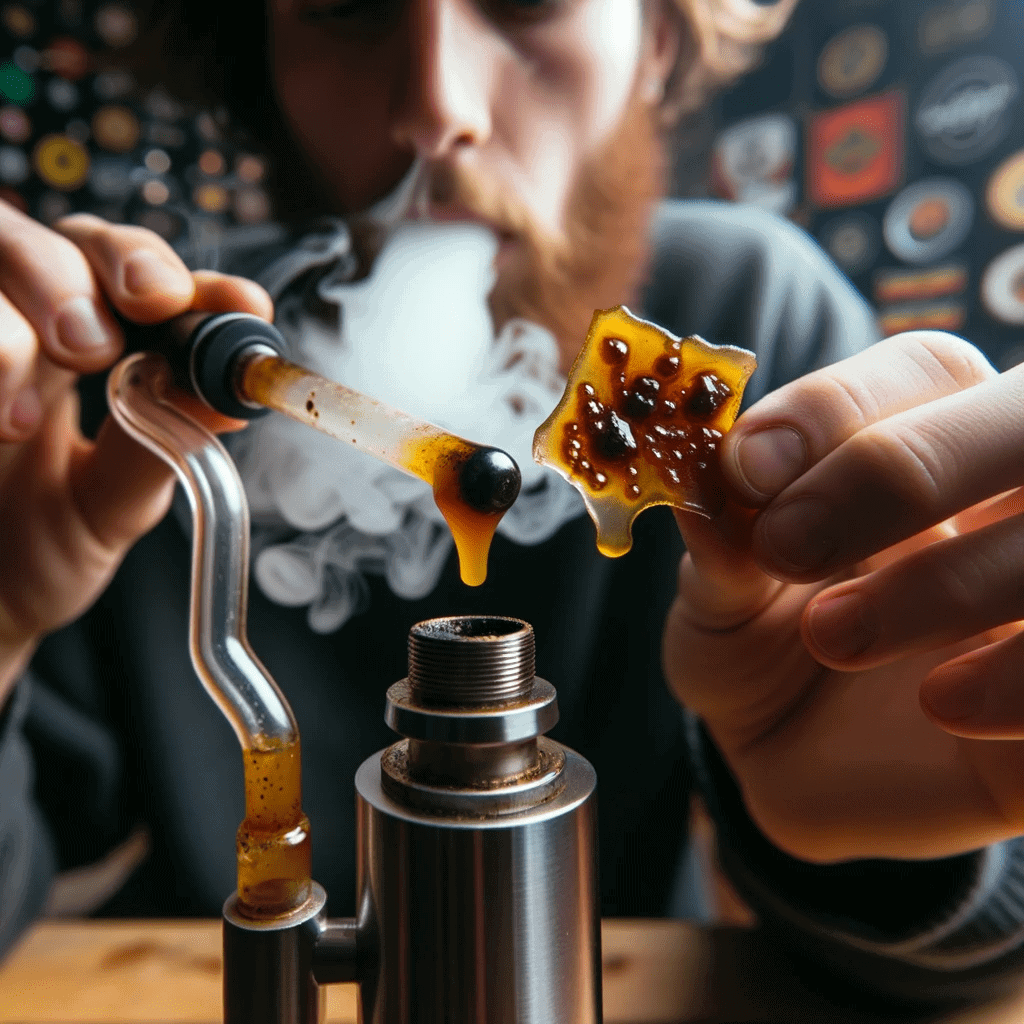Introduction
Cannabis concentrates have gained immense popularity among enthusiasts for their potency and unique characteristics. In this comprehensive guide, we will delve deep into one such concentrate – rosin. Rosin stands out as one of the cleanest and most pure forms of cannabis concentrate due to its solventless extraction process using heat and pressure. We will explore what rosin is, factors influencing its quality, different styles, benefits, practical tips, and even compare it with other concentrates like hashish. Additionally, we’ll provide insights into storing rosin to maintain its quality.
For a wide selection of cannabis products, visit Sunshine Essentials®. Feel free to explore our educational blog for further insights into the world of cannabis.
What is Rosin?
Rosin is a cannabis concentrate celebrated for its purity and potency. Unlike other concentrates that use chemical solvents, rosin is made through a solventless extraction process that involves the application of heat and pressure. The key to producing high-quality rosin lies in starting with top-tier cannabis flowers, emphasizing the importance of the initial material used.
Factors Affecting the Quality of Rosin
| Factors | Description |
| Starting Material | High-quality cannabis flowers with rich terpene profiles, trichome density, and active cannabinoids are essential. |
| Age of Starting Material | Fresher material tends to produce higher quality rosin. |
| Temperature and Pressure | Precise control of these factors prevents rosin from darkening and losing terpenes. |
| Extraction Method | Different methods yield various consistencies and qualities of rosin. |
| Humidity of Material | Material that is too dry or too moist can result in lower quality rosin. |
For more information and a wide selection of cannabis products, visit our store. Feel free to explore our educational blog for further insights into the world of cannabis.
Styles of Rosin

Rosin comes in various styles, each with unique characteristics:
- Clear and Shiny Like Sap or Syrup: This high-quality rosin has a glass-like appearance, resembling sap or syrup, with a color ranging from golden honey to off-white.
- Creamy and Whipped Like Golden Budder: Whipped buddha rosin is created by whipping rosin to incorporate air, giving it a creamy, buttery texture, typically pale in color.
- Dark and Relatively Soft: Dark rosin, with its soft texture and high viscosity, is often used in cold and dry conditions, with color influenced by extraction conditions.
- Glassy and Brittle: This type of rosin is typically glassy and brittle, sometimes forming crystals when brought into solution.
The appearance and texture of rosin can also be influenced by factors such as starting material, extraction method, and extraction conditions.
Benefits of Rosin
Rosin offers several benefits:
- Purity and Potency: Celebrated for its high purity, potency, and exceptional flavor profile.
- Solventless Extraction: The process ensures no harmful chemicals, making it one of the cleanest cannabis concentrates.
- Medical Potential: Rosin may help with pain management, insomnia, and nausea/vomiting.
- Unique Qualities: Stands out among other concentrates due to its unique qualities.
Uses of Rosin

Rosin can be used in various ways, catering to different consumer preferences:
- Dabbing: Consumed through dab rigs, offering a rapid onset of effects.
- Vaping: Used in vaporizers, allowing for precise temperature control and flavor preservation.
- Smoking: Rolled into joints or smoked in pipes for a classic experience.
- Edibles: Infused into recipes, providing an alternative consumption method.
Each method offers a distinct experience, allowing users to enjoy the rich flavor and effects of rosin in their preferred manner.
Differences in Effects of Rosin and Hashish
While both rosin and hashish are cannabis concentrates, they differ in their extraction methods, appearance, and effects:
- Extraction Methods:
- Rosin: Made through a solventless process involving heat and pressure, preserving the complete cannabinoid and terpene profile.
- Hashish: Produced by separating trichomes from plant material using various methods, including traditional hand-rolling and modern techniques like ice water extraction.
- Appearance and Texture:
- Rosin: Varies in appearance and texture, from viscous to waxy, depending on extraction conditions and source material.
- Hashish: Exhibits diverse appearances, ranging from soft and pliable to hard and brittle.
- Potency and Flavor:
- Rosin: Known for its high potency and exceptional flavor profile, preserving a wide range of cannabinoids and terpenes.
- Hashish: Also potent with a unique flavor profile influenced by the strain and extraction method used.
Optimal Temperature Settings for Rosin
The ideal temperature range for pressing quality rosin depends largely on the type of source material being pressed. By experimenting within broad temperature ranges, we can get a sense of how our source material performs under certain specific temperatures. The amount of heat used during extraction impacts the final quality of rosin in several ways. We need heat to transform the state of the cannabis trichomes from a solid to a liquid, but too much or too little can have negative effects.
Flavor and Terpene Preservation
Lower temperatures are ideal for preserving the flavor and terpene profile of rosin. The sweet spot for overall quality and yield for flower rosin is between 200°F and 210°F. If terpene preservation and quality is your #1 goal, you should probably start colder and evaluate your results. Anything above 210°F can bolster yields; however, you may notice a reduction in terpenes. Using temperatures of around 450-550°F is ideal for hydrocarbon extracts such as Live Resin. It’s also great for rosin extracts, especially those made using a home rosin press.
Potency
Higher temperatures can diminish some of the floral profile in rosin, but they can also increase the potency of the rosin. The best temperature for dabbing is anywhere between 500 and 650°F. This is the temperature for an ideal low-temp dab which preserves terpenes and fully vaporizes your concentrate, leaving behind minimal mess and the best flavors. Temperatures lower than 500 degrees will waste concentrates by not fully vaporizing them, and dabs over 720 degrees will also waste concentrates by burning them.
Experimentation
The key to finding the best temperature for rosin is experimentation. Different types of source material require different temperatures to bring out their full flavors. Consider rosin pressing like cooking – different types of foods require different temperatures to bring out their full flavors. The boiling point of terpenes varies widely, and many are well above 350°F. You don’t want to get anywhere near there, as significant terpene degradation can happen well below the boiling point, but the point is that not all strains need to be pressed at the minimum temperature. Play with different heat settings on your rosin press with small samples to find what works best for you.
In summary, the ideal temperature range for pressing quality rosin depends largely on the type of source material being pressed. Lower temperatures are ideal for preserving the flavor and terpene profile of rosin, while higher temperatures can increase the potency of the rosin. Experimentation is key to finding the best temperature for rosin, and different types of source material require different temperatures to bring out their full flavors.
Benefits of Using Cannabis Rosin
Outstanding Flavor: Live rosin captures the entire spectrum of flavors and aromas of the original cannabis strain, making for a more pleasant and tasty experience. Rosin offers a diverse spectrum of flavors and effects to cater to individual preferences.
Solventless Extraction: By eliminating the use of solvents, a clean, pure concentrate is produced, appealing to customers who value quality and purity. Rosin is a much safer option than other concentrates that rely on solvents like butane or CO2.
Potency: Rosin retains high quantities of cannabinoids, giving both medical and recreational consumers a powerful and effective experience. Rosin is very potent, with THC levels often exceeding 80%.
Versatility: Rosin can be consumed in various ways, including smoking, dabbing, and even orally. This makes it an excellent option for those seeking a potent and convenient way to consume cannabis concentrates.
No Harmful Chemicals: Rosin is a solventless concentrate, which means that it does not require the use of any harmful chemicals or solvents to be produced. This makes it a much safer option than other concentrates that rely on solvents like butane or CO2.
In summary, cannabis rosin offers a range of benefits over other forms of cannabis consumption, including outstanding flavor, solventless extraction, high potency, versatility, and no harmful chemicals. These benefits make rosin a popular option among cannabis enthusiasts who value quality, purity, and potency.
Additional Information
For more information on cannabis strains, accessories, and the latest trends in the industry, visit our educational blog.
If you have any questions or need further assistance, don’t hesitate to contact us. We’re here to help!
For assistance with addiction, we recommend visiting the National Institute on Drug Abuse. Please visit the National Institute on Drug Abuse (NIDA).
© 2023 Sunshine Essentials®
Great beat ! I would like to apprentice while you amend your web site, how could i subscribe for a blog site? The account helped me a acceptable deal. I had been a little bit acquainted of this your broadcast provided bright clear concept
Thank you for your post. I really enjoyed reading it, especially because it addressed my issue. It helped me a lot and I hope it will also help others.